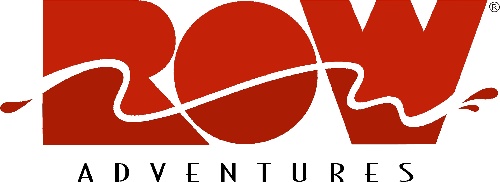Idaho’s Best Multi-Day Wilderness Rafting
While the most famous wilderness multi-day rafting trip in Idaho is the Middle Fork of the Salmon, there are others that are equally worthy of the title “Best trip.” Having guided for over 40 years on rivers around the world, I have a good understanding of what makes for an outstanding river trip. People often ask me “What is your favorite river?” and my response is always the same; just like people, each river offers its own character along with various pros and cons. In choosing the best trip for you, ask yourself what sort of experience you want. Consider the amount of excitement you want, your level of outdoor experience, the demographics of who you want to be traveling with (it’s more fun for most families to travel with other families for example), the time of year you can vacation, the length of trip you want, etc.
Some rivers have more exciting whitewater than others. Some feature desert scenery while others are surrounded by forests of green. Some are suitable for those with no experience while others are best enjoyed by those who have rafted before. Some rivers offer great hiking, a few have hot springs, others are rich in Indigenous rock art and/or pioneer history, and fishing is better on some than others.*
Idaho’s topography of rugged mountains and valleys kept many river canyons free of roads or railroads. In addition, forward-thinking individuals worked hard to protect much of Idaho as Wilderness with a capital W, ultimately passing legislation for Federal designation as such. The largest single wilderness area in the entire lower 48 United States is Idaho’s Frank Church River of No Return Wilderness (2.2 million acres) that in turn adjoins the 1.1 million acre Selway-Bitterroot Wilderness. Several of the rivers highlighted below flow through these vast Wilderness areas. There are also large areas of designated wilderness in the south of the State. In short, there is no place on earth that offers so many superlative wilderness multi-day rafting trips as Idaho.
In the end, there is no “best” river. However, it is wise to spend some time learning about your options so you can choose a rafting trip most likely to fulfill your dreams. To help you with that, here are what I consider to be the six best Idaho multi day wilderness rafting adventures, all worthy of your consideration. While some are not as famous as others, you would be remiss to not consider them.
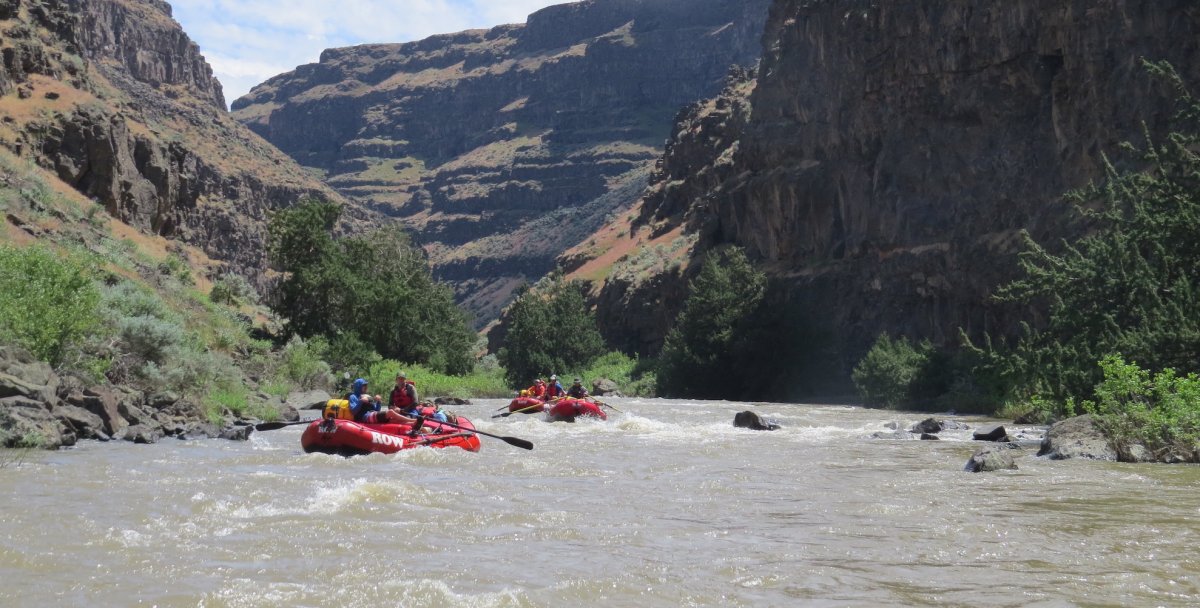
Jarbidge/Bruneau Rafting:
With headwaters on the Idaho/Nevada border and flowing from the Bruneau-Jarbidge Wilderness Area, this is one of Idaho’s least-known, yet highest quality wilderness river trips. We consider it a journey for the “river connoisseur” and like many of the finest things in life, people often hear about the Bruneau through word of mouth - from friends or professional raft guides. There are many reasons to love the Bruneau. Foremost is the truly spectacular scenery. The river flows through some of the most remote wilderness in the lower 48, in a neck-bending narrow and steep canyon of staggering beauty. This is the wild, wild west, rich in history, and where dark night skies glow bright with the Milky Way.
Two different trips are offered here. One is a 7-day Jarbidge/Bruneau combination trip floating some 70 river miles. The first 30 miles are on the Jarbidge and due to the extreme remoteness, frequent, challenging whitewater and two portages, only experienced rafters in good physical condition should go on this trip. A shorter 5-day trip starts where the Jarbidge merges with the West Fork of the Bruneau to form the main Bruneau. The classic Bruneau rafting trip covers 40 miles and allows plenty of time for hiking. It’s not an experience you want to rush. These dramatic canyons rival the beauty of Zion National Park or any other part of the American Southwest canyonlands. The flora and fauna is diverse with several endemic species that we see along the way.
In terms of whitewater, the main stem of the Bruneau has numerous class II-III rapids but the real thrill comes on the third or fourth day of the trip during “5-Mile Rapids'' which is a nearly constant succession of challenging class IV+ rapids. Adding to the delight, we usually have the river to ourselves as few people float the Bruneau due to its short season (May-June), challenging rapids, and difficult access road.
In 2009 Congress designated over 300 miles of mainstem and tributary river segments of the Owyhee and Bruneau for protection under the Wild and Scenic Rivers Act. In addition to the Bruneau, there are also river trips on the little-known Owyhee that flows from Nevada through the southwest corner of Idaho just west of the Bruneau. Six and Seven day inflatable kayak adventures as well as more traditional rafting trips are available.
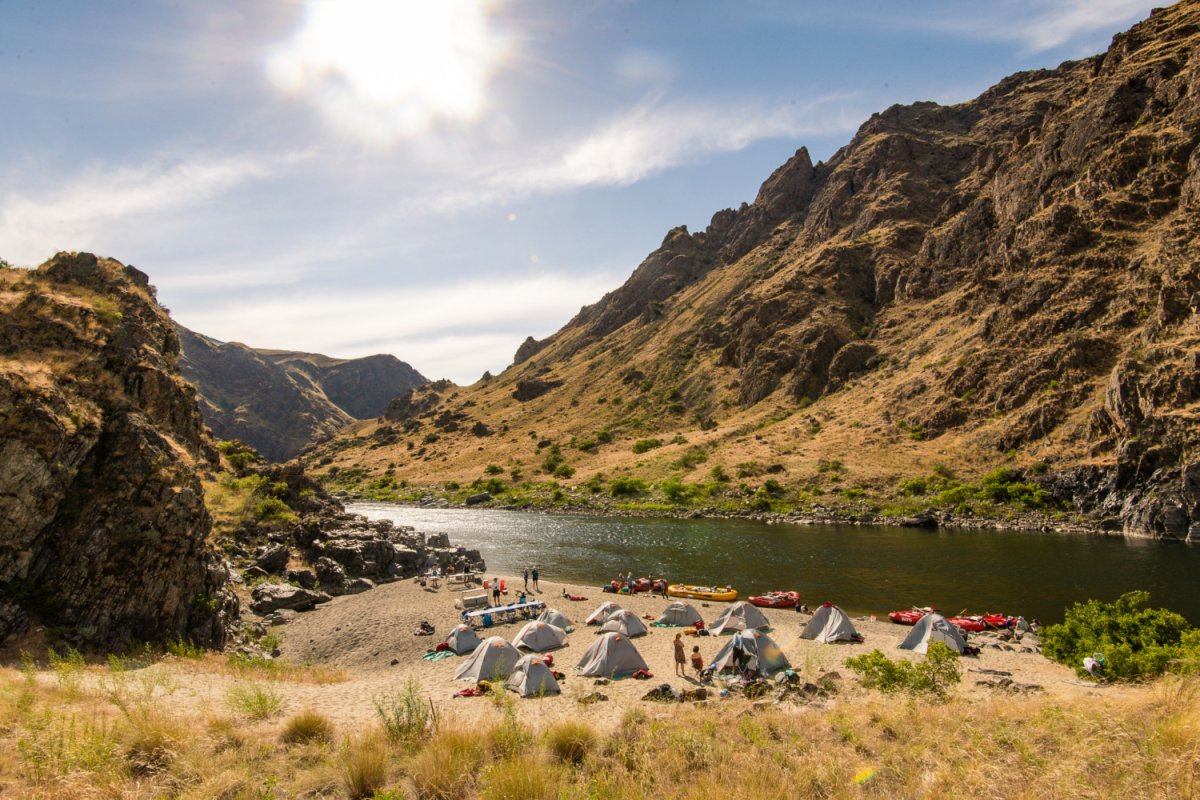
Snake River through Hells Canyon Rafting
After crossing southern Idaho where it waters thousands of acres of agricultural land and is joined by numerous tributary rivers including the Bruneau and Owyhee, the Snake River turns north to form the border between Idaho and Oregon. Around 15,000 years ago, the massive banks of Lake Bonneville burst and the rush of draining water carved Hells Canyon, scouring through hard rock and forming the deepest canyon in North America (yes, it’s deeper than the Grand Canyon in Arizona). Trips through Hells Canyon on the Snake River are three to six days in length and take out at Pittsburg Landing, just 34 miles from the launch point at Hells Canyon Dam. Alternatively, you can continue another 46 miles and take out at Heller Bar, just below the confluence of the Grande Ronde River (another multi day river trip with gentle waters). The biggest rapids are in the first 34-mile section and include the Class IV rapids of Wild Sheep and Granite; rapids with huge waves and hydraulics. There are plenty of other fun Class III+ rapids including Rush Creek, Sluice Creek, Waterspout, Wild Goose, and more.
Camps on the Snake are set on beaches above the river where towering ponderosa pine trees, sagebrush. and hackberry trees have lived for eons. Wildlife includes black bears, bighorn sheep, mule deer, and various birds of prey such as golden eagles. This was home to several Indigenous tribes and we see rock art and the remains of pit houses as evidence of their presence here for thousands of years.
Trips run from early May through September, and there is also an option of a raft-supported hiking trip on a trail that follows the river’s course for some 30 miles. In May and June, the river canyon is fairly green, wildflowers are in bloom and the weather is variable, but generally sunny and warm. By early July and through August, it’s rare to have any rain and the canyon slopes gradually turn from green to brown. It’s a glorious canyon of huge proportion that is suitable for people with or without previous rafting experience.
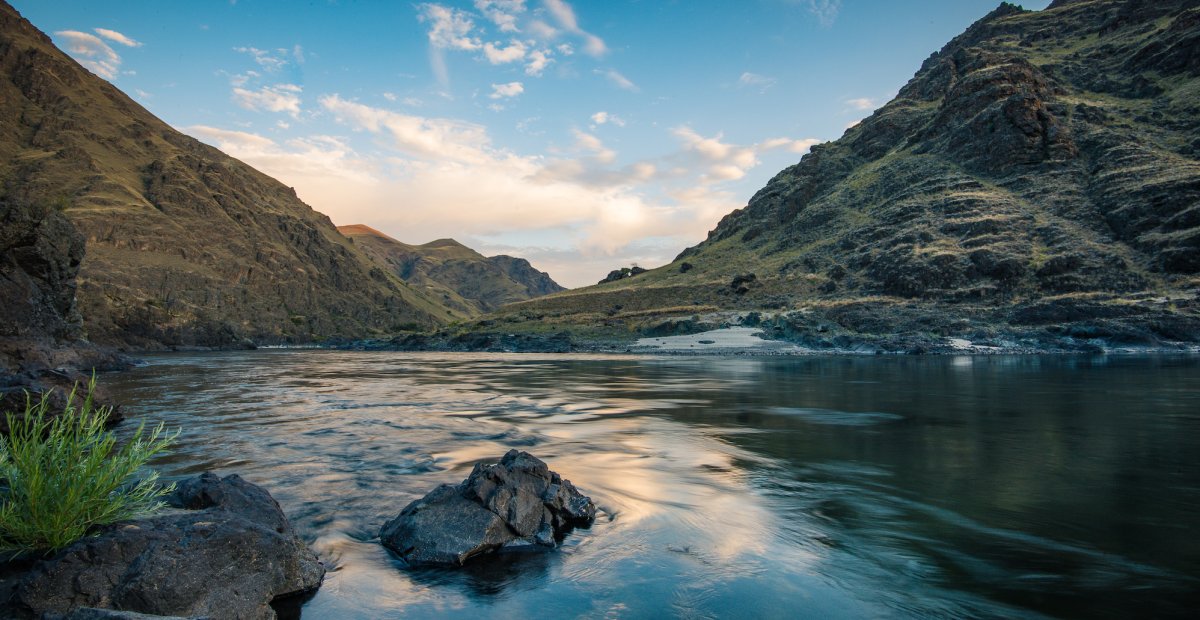
Main Salmon Rafting:
Idaho’s River of No Return is the longest undammed river in the lower 48, flowing over 300 miles from its headwaters in the Sawtooth Mountains to the confluence with the Snake River in Hells Canyon. Between the point where the Middle Fork of the Salmon joins the Main Salmon, and Vinegar Creek, 30 miles upstream of Riggins, Idaho (where there are shorter 1-3 day trips) the Salmon courses its way 80 miles through forested canyons with fun class III rapids. Between the rapids long stretches of lazy water invite you to jump in and float along next to the raft. The canyon is rich with stories of early trappers and settlers such as Buckskin Bill. Camps are set on big white sand beaches. This is a good choice for families with kids as young as seven or eight. Trips are typically five or six days in length and run from late June through early September.
https://www.fs.usda.gov/detail/scnf/recreation/wateractivities/?cid=stelprdb5303132
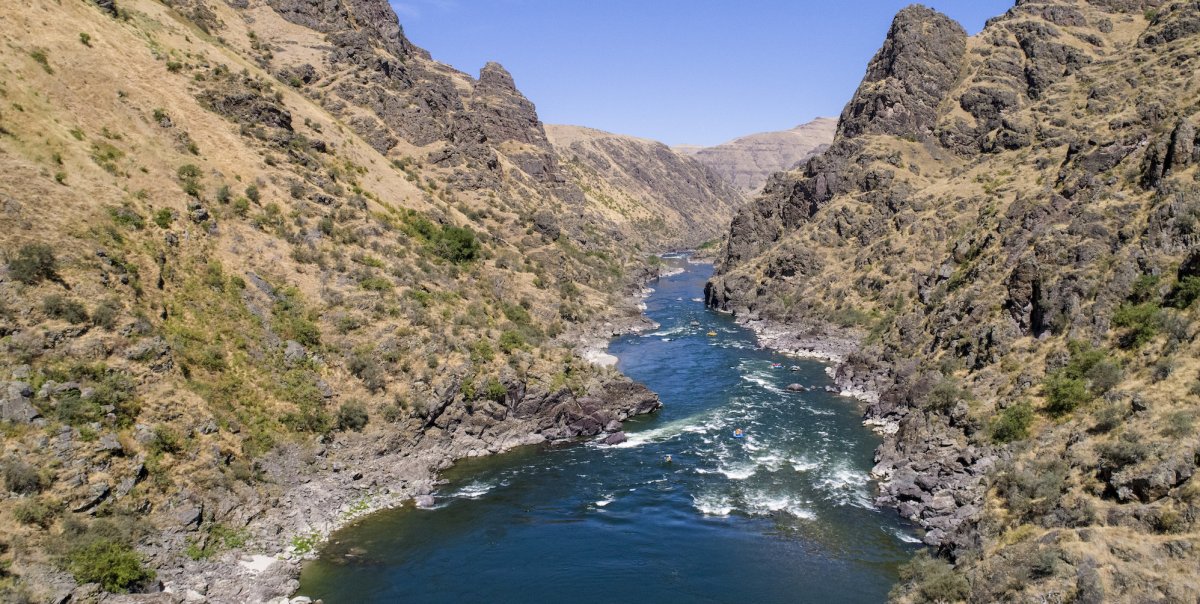
Lower Salmon River Canyons Rafting:
Downstream 55 miles from where trips on the Main Salmon end at Vinegar Creek, is the start of Idaho’s best rafting trip for families with younger children. Camps are on long, pristine white sand beaches, and with hot summer days that range from 80-95 degrees, the water is warm enough to jump in and swim. The rapids are fun intermediate Class II-III with big splashy waves and at certain flows there are a couple of Class IVs to spice up the trip. The numerous and fun rapids make this a trip that experienced rafters will enjoy and is also suitable for first-timers. Most sections are suitable for inflatable kayaks as well.
Most trips on the lower Salmon River are five days in length and cover 81 miles, 19 of which are on the Snake River at the tail end of Hells Canyon. Trips run from early July through September and feature hot sunny days where rain is rare. If you’re not an experienced camper, you will find ideal camping conditions with warm summer evenings, soft sand and a total absence of mosquitoes. At many of the beach camps, the sand slopes gently into an inviting swimming area, another reason this is a superb family rafting trip. Wildlife includes mule deer, river otters, songbirds, and various birds of prey such as golden eagles, red-tailed hawks, and prairie falcons. There are also important sites including rock art and ancient pit houses, related to the Nez Perce who lived in this canyon for thousands of years.
The river is called both the “Lower Salmon” and also the “Salmon River Canyons.” The latter is a more descriptive name that comes from the fact that the river passes through four distinct canyons – Green, Cougar, Snowhole, and Blue. Most of the whitewater is found in these canyons where the river is constricted between the rugged canyon walls. At the end of each canyon the river opens up into a broader expanse and it is in these sections where most of the camping beaches are found. On ROW’s Family Magic rafting trips, kids as young as five years old are welcome and our signature River JesterTM leads nature-oriented games and activities and makes sure that kids are having the time of their lives. We also offer trips that are not exclusive to families. The lower Salmon River Canyons is the perfect showcase of the American West and perhaps the most ideal introductory river to the world of multiday wilderness river trips.
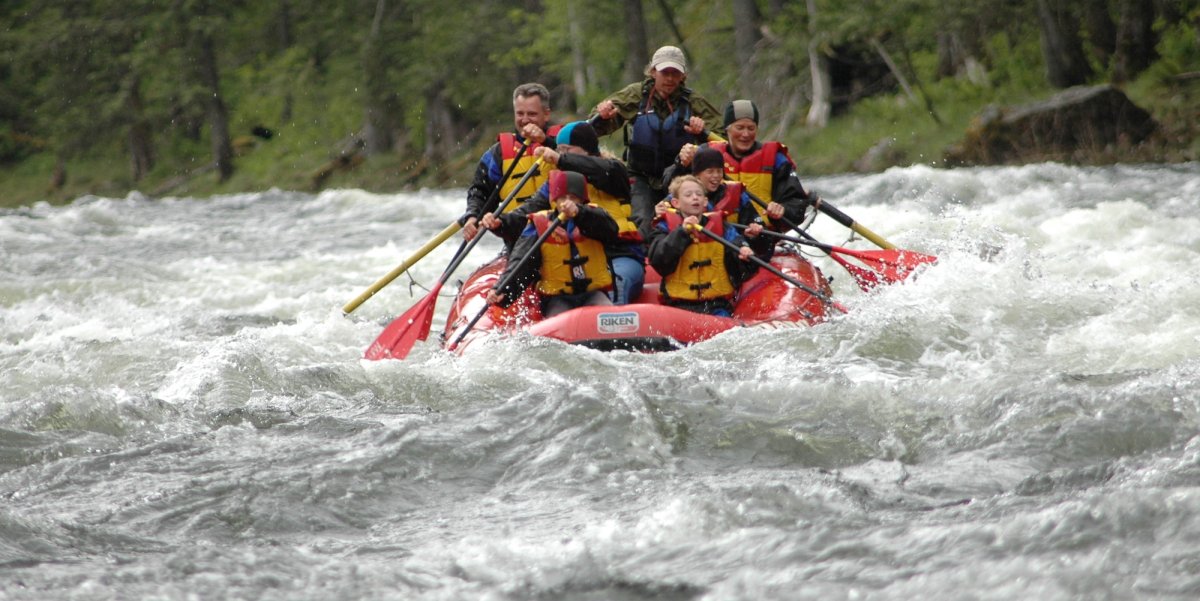
Selway:
Not as well known as some of Idaho’s more famous rivers, but full of allure for those that know of it, the Selway is a highly regulated river trip where only one group per day can launch. It flows through the Selway-Bitterroot Wilderness and has some very challenging whitewater. It’s another early season trip (June to mid-July) because there are no dams and flows, so the water levels depend on the melting of winter snowpack. It’s a crystal-clear river at medium to low flows with excellent fishing. Camps are set on tree-studded bars a few feet above the river and there is an excellent hiking trail that parallels the river’s course. Like the Bruneau, the Selway is a trip to enjoy after gaining whitewater experience elsewhere. Most trips are five or six-days in length.
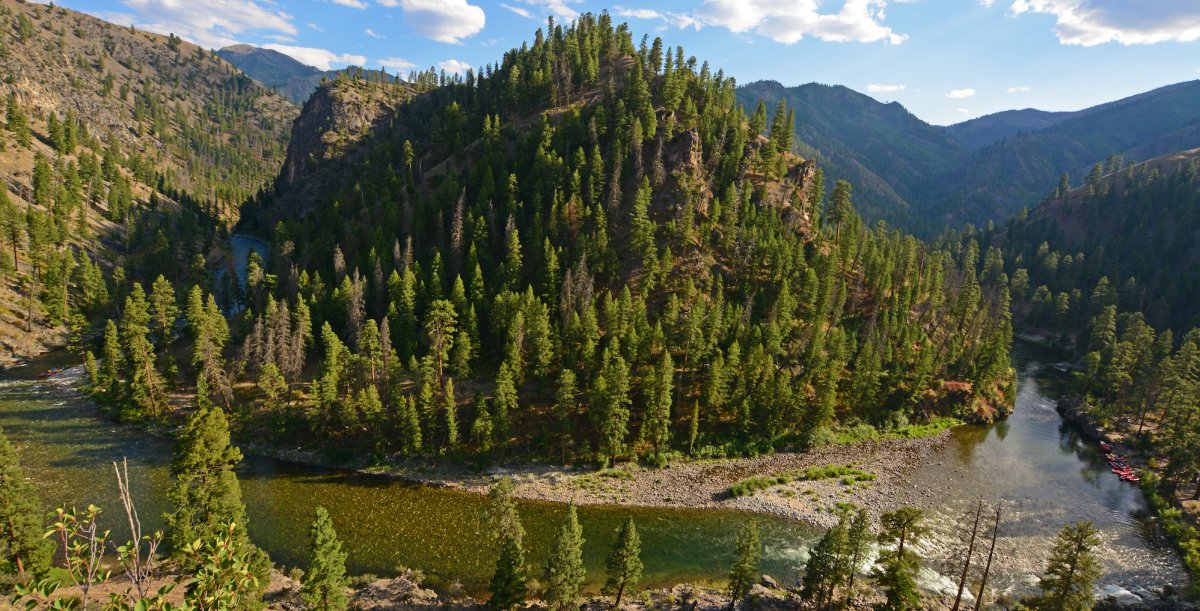
Middle Fork of the Salmon:
Of all the rivers of the Northern Rockies none offers a more spectacular alpine wilderness rafting trip than the Middle Fork of the Salmon River. While plenty of people like to notch their adventure belt with a trip on the Colorado through the Grand Canyon, the winner for me is the Middle Fork of the Salmon. With 100 miles of constant current that drops 3000’ from the start to the end, the Middle Fork is full of fun Class II-III rapids as well as quite a few exciting Class IV drops such as Velvet Falls, Pistol Creek, Redside, and Weber. Those seeking bigger thrills should raft the river in June or early July. As the summer continues and water levels on this snowmelt-fed river drop, the rapids begin to mellow. The bonus is that as summer progresses, the water and weather warm up. In addition, lower water means amazing fishing, so bring your rod and make some casts! If you’re a fishing fanatic, then come on a late-season fishing trip to enjoy this blue-ribbon cutthroat trout fishery.
Camps on the Middle Fork are on beaches set slightly above the river, often studded with massive ponderosa pine trees. Camp time might be spent exploring nearby trails, fishing or just relaxing with friends.
Hikers love the Middle Fork trail that parallels much of the river and raft-supported hiking adventures are another option to experience this gem of a wilderness. The canyon is rich with Indigenous rock art, with over 100 identified sites. The most common wildlife seen are bighorn sheep which come to various mineral licks along the river and are often seen grazing near the river’s edge. There are also black bears, river otters, minks, and several species of waterfowl and birds of prey including peregrine falcons, red-tailed hawks and others.
Because the Middle Fork Salmon is a popular river, you will see other rafters, but trips from mid-August to late September see many fewer groups. If you’re looking for a world-class wilderness river trip with plenty of whitewater fun and breathtaking scenery, the Middle Fork of the Salmon is a great choice.
It is no secret that Idaho is home to some of the best whitewater rafting in the country. You can’t make a bad decision when choosing which river to explore. They all offer different features, benefits, and overall experiences that are guaranteed to send you home with stories to tell. We’re here to help you decide which river is right for you!
